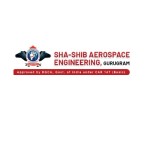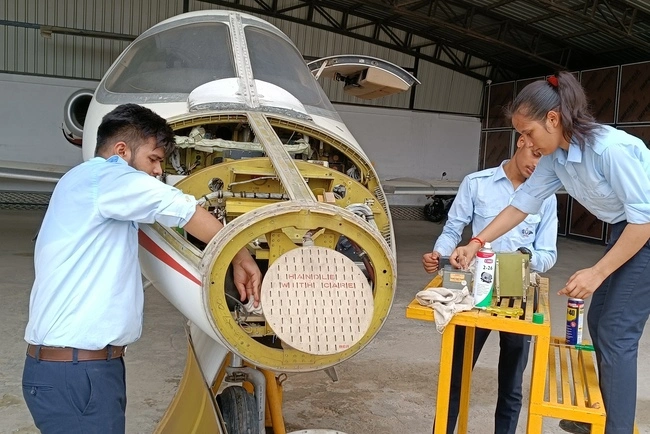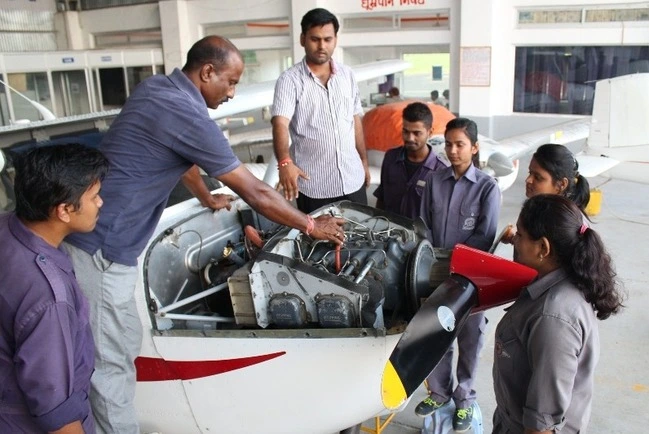To be able to assure the safety and airworthiness of aircraft, Aircraft Maintenance Engineering (AME) is essential to the aviation sector. The need for registered aircraft maintenance engineers keeps rising due to the aviation industry's rapid growth in India and around the world. This guide provides comprehensive details about the course, curriculum, job possibilities, and pay in India for those who have an interest in learning more about what Aircraft Maintenance Engineering is.
What is Aircraft Maintenance Engineering?
The maintenance, repair, inspection, and modification of aircraft and its components are the main emphases of the specialized field of engineering known as aircraft maintenance engineering. In contrast to typical engineering occupations, AME isn't accredited by a standard university degree but rather by aviation regulating bodies like India's Directorate General of Civil Aviation (DGCA).
Making sure an airplane is fit to take off is the primary mission of an AME. Engineers conduct routine maintenance, analyze aircraft systems, and make sure all parts adhere to safety standards. No plane will be allowed to take off without their authorization.
Aircraft Maintenance Engineering Course Details
Students who finish intensive and practical Aircraft Maintenance Engineer course are prepared to become eligible maintenance engineers. The details of the AME course are laid down below:
According to the program's type (category A or B), the course usually lasts between two and four years.
Certification: The DGCA in India has approved this licensing course.
Students must have earned a 10+2 diploma in Physics, Chemistry, and Mathematics (PCM) or its equivalent in order to be eligible. Diploma holders are also accepted by a few organizations.
Age Requirement: The minimum age for entry is often 16–17 years old.
The course is divided into two primary categories:
Category A: An essential license that allows the holder to issue certificates for simple defect rectification and humble scheduled line maintenance.
Advanced categories B1 (Mechanical) and B2 (Avionics) give engineers the authority to carry out intricate maintenance tasks and grant accreditation of release to service.
Aircraft Maintenance Engineering Syllabus
The training program for Aircraft Maintenance Engineering was created to include both theoretical and hands-on instruction. Along with classroom education, students also receive real-world training in aerospace repair settings.
Here are the key subjects covered:
For B1 (Mechanical):
Aircraft Structures and Systems
Aircraft Materials and Hardware
Gas Turbine Engines
Piston Engines
Maintenance Practices
Aerodynamics
Aviation Legislation
For B2 (Avionics):
Electrical Fundamentals
Digital Techniques in Electronic Instrument Systems
Aircraft Instrument Systems
Radio Navigation and Communication Systems
Maintenance Practices
Aircraft Electrical and Electronic Systems
As an essential aspect of the curriculum, pupils also finish On-the-Job Training (OJT) in Maintenance, Repair, and Overhaul (MRO) organizations that have been approved by the DGCA.
Career Opportunities after AME Course
The aviation and aerospace segments provide a wide range of job prospects to graduates of courses in aircraft maintenance engineering. Once licensed, they are permitted to cooperate with:
Domestic and international airlines
Aircraft manufacturing companies
Maintenance Repair Organizations (MROs)
Government aviation departments (e.g., HAL, DRDO)
Flying clubs and charter service providers
Some graduates even pursue careers in aviation safety, regulatory affairs, and aircraft accident investigation.
Aircraft Maintenance Engineering Salary in India
The pay scale for aircraft maintenance engineers in India varies depending on experience, license type, and company type. Here's an overview:
Trainee AME: ₹25,000 to ₹40,000 per month
Licensed AME (Category A): ₹40,000 to ₹70,000 per month
Licensed AME (Category B1/B2): ₹70,000 to ₹1.5 Lakh+ per month
Senior AMEs and QA Engineers: ₹1.5 Lakh to ₹3 Lakh+ per month
Higher compensation packages and extra benefits are frequently offered by international airlines and MROs. Further, the pay increases tremendously with experience and identification.
Why Choose Aircraft Maintenance Engineering?
There are several compelling reasons to pursue Aircraft Maintenance Engineering:
High Demand: There is an urgent demand for trained AMEs due to India's increasing fleet of private and commercial aircraft.
Global Opportunities: AME licenses are recognized around the world, providing employment opportunities in countries including the United Arab Emirates, Singapore, Canada, and Europe.
Respect and Responsibility: AMEs are a respected and vital profession as they bear an enormous responsibility for aviation safety.
Hands-on Career: Those who prefer technical, hands-on work over theoretical desk occupations will consider this course excellent.
Final Thoughts
Maintenance of Aircraft Engineering is an obligation to the dependability and safety of aviation, not just a job. This can be the ideal field for you if you're enthusiastic about engineering and aircraft and want a job that combines technical know-how with hands-on experience.
One thing is obvious whether you're looking at the specifics of the Aircraft Maintenance Engineering degree, comprehending the syllabus for the AME school, or looking out the salary for this job in India: it's going to grow dramatically.







Comments